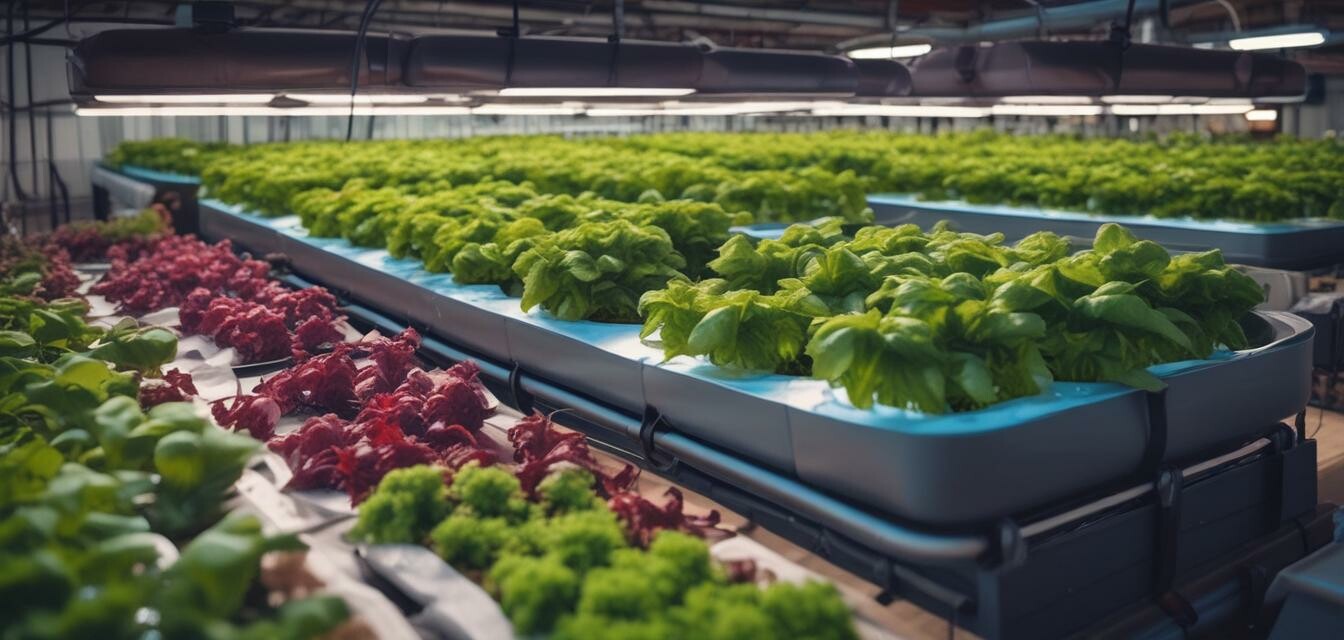
Understanding Nutrient Cycling in Hydroponics
Key Takeaways
- Nutrient cycling is essential for maintaining healthy plants in hydroponic systems.
- Understanding the roles of macronutrients and micronutrients is crucial for optimal plant growth.
- Regular testing and adjustment of nutrient solutions help prevent deficiencies and toxicities.
- Proper pH management boosts nutrient availability.
- Establishing a feeding schedule is key to effective nutrient cycling.
Hydroponics has revolutionized the way we grow plants, allowing for efficient cultivation without the need for soil. One key aspect of hydroponic gardening that all growers should understand is nutrient cycling. This process ensures that the plants receive the nutrients they need to thrive. In this article, we will explore the concept of nutrient cycling, its significance, and best practices for maintaining a balanced nutrient solution in your hydroponic system.
What is nutrient cycling?
Nutrient cycling refers to the process through which nutrients are continuously recycled in a hydroponic system to sustain plant growth. This involves the absorption of nutrients from the solution by the plants, the breakdown of organic materials, and the replenishment of nutrients back into the system. Understanding this cycle is vital for any hydroponics grower looking to maximize plant health and yield.
The roles of nutrients in hydroponics
Plants require various nutrients to grow, and these can be categorized into macronutrients and micronutrients. Let's take a closer look at both categories:
| Type | Nutrients | Function |
|---|---|---|
| Macronutrients | Nitrogen, Phosphorus, Potassium, Calcium, Magnesium, Sulfur | Essential for growth, development, and overall plant health |
| Micronutrients | Iron, Manganese, Boron, Zinc, Copper, Molybdenum | Support biochemical processes and help prevent diseases |
Macronutrients explained
Macronutrients are required in larger quantities and play a fundamental role in the growth and development of plants. For instance:
- Nitrogen (N): Crucial for leaf and stem development.
- Phosphorus (P): Important for roots, flowers, and fruits.
- Potassium (K): Enhances overall plant health and disease resistance.
- Calcium (Ca): Vital for cell wall structure and growth.
- Magnesium (Mg): Central to photosynthesis.
- Sulfur (S): Integral in protein synthesis.
Micronutrients in detail
Micronutrients may be needed in smaller amounts, but they are no less important. Each micronutrient has specific roles:
- Iron: Essential for chlorophyll production.
- Manganese: Aids in photosynthesis and respiration.
- Boron: Important for cell division and growth.
- Zinc: Necessary for enzyme function.
- Copper: Involved in photosynthesis and respiration processes.
- Molybdenum: Helps in nitrogen fixation.
The importance of nutrient cycling
Effective nutrient cycling is crucial for several reasons:
- Plant Health: Ensures that plants receive a balanced mix of nutrients for optimal growth.
- Growth Rate: Nutrient cycling helps speed up the growth process, allowing for quicker harvests.
- Cost-Effectiveness: By maintaining a balanced solution, you can reduce waste and save on nutrient costs.
- Environmental Impact: Reducing nutrient runoff contributes to better environmental practices.
Testing and adjusting nutrient solutions
Regularly testing your nutrient solution is essential for effective nutrient cycling. Here are some considerations:
| Parameter | Optimal Range |
|---|---|
| pH Level | 5.5 - 6.5 |
| Electrical Conductivity (EC) | 1.2 - 2.0 mS/cm |
| Nutrient Concentration | Depends on the specific plant needs |
Managing pH levels
pH is crucial in hydroponics as it affects nutrient availability. Keeping the solution within the optimal pH range enhances nutrient uptake. Regularly check pH levels and use pH adjusters to maintain balance.
Feeding schedules
Establishing a feeding schedule can optimize nutrient cycling. Factors include:
- Plant type and growth stage
- Environment conditions
- Nutrient solution strength
As a general rule of thumb, young plants may require lighter feeding, while mature plants may need a more concentrated solution.
Conclusion
Understanding nutrient cycling is fundamental for anyone involved in hydroponic gardening. By effectively managing nutrients, monitoring pH levels, and establishing a feeding schedule, you can ensure that your plants receive everything they need to grow strong and healthy. For more tips on optimizing your garden, check out our articles on nutrient management and nutrient solutions.
Pros
- Promotes healthy plant growth.
- Reduces risks of nutrient deficiencies.
- Encourages efficient nutrient use.
- Increases overall yield.
Cons
- Requires regular monitoring and adjustments.
- Can be complex for beginners.
- Over-fertilization risks can lead to nutrient pump failures.
